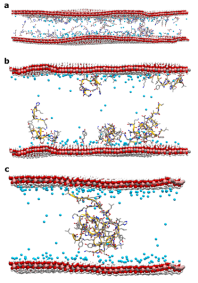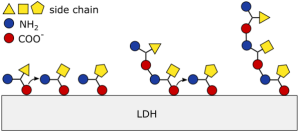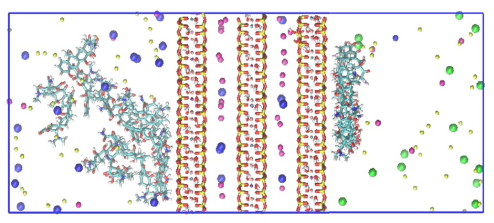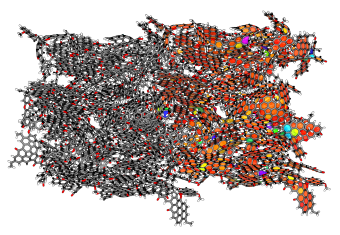
Our research focus is on the use and development of molecular models and computational techniques for the study of dynamic processes involving minerals, materials and interactions at their interfaces.
The group and our collaborators have a very unique multidisciplinary background, bringing together knowledge from theoretical and experimental chemistry, material and environmental sciences, geosciences and astrobiology. We aspire for our work to foster a step-change in computational modelling, ensuring that the work we do are of direct benefit to our society.
The applications of our research are vast, from abiogenetic origins of life, biosignature identification, soil and water pollution remediation, nuclear waste storage, enhanced oil recovery and fuel additives, all done with a pinch of software development.
OUR AREAS of research
Origins of Life

The origins of life have been the subject of much research, but fundamental questions still remain unanswered. We are interested on the surface-supported the abiogenetic formation of proto-biomolecules in early Earth and extraterrestrial conditions, as well as the preservation of potential bosignatures.
Pollution Remediation

The rise of densely populated environments brings new challenges to our society, one of many is the management and disposal of increasingly diverse pollutants. With our work we aim to identify the key properties making naturally occurring materials capable of adsorbing small organic pollutants.
BIOCHAR MATERIALS

Biochar is a remarkable material! Made from pyrolysis of biomass, byproduct of human waste, they have been used for soil amendment, carbon deposition and, more recently for sequestration of pollutants. With a poorly defined structure and featuring large variety of chemical structures and functional groups, creating a representative molecular model of biochar is not a simple task. We are working on developing these models to become available for the biochar research community.
Enhanced Oil Recovery

Organic molecules in the hydrated pore of kaolinite clay mineral
EOR has become commonplace in order to maximise oil field production. Our work elucidates the mechanisms behind this process with series of clay – oil simulations.
High surface layered materials
Layered materials, such as graphene, clays, layered double hydroxides, can be found in a wealth of technological applications. Often, the performance of this materials depends on the accessibility of their large surfaces. The increase of the surface area is often obtained via post-production treatment with a range of organic solvents. Hunt of a perfect solvent is focus of thousands of hours in the laboratories. Working with experimental and industrial collaborators we use our computational pipelines to rationalise the key interactions behind specific delimitation, helping to find that perfect solvent for material in mind.
Crystallisation in Fuels
Wax formation in petroleum impacts the ease of its transportation and use. There are numerous wax crystal inhibitors on the market, but their mode of action is still poorly understood. Multi-scale computer simulations allow elucidating mechanisms of wax formation and inhibition, guiding further development of cold flow additives.
Mixing and Separation in PolymerIC matriCes
Many of our daily products relly on polymeric systems. For instance, the shelf life of products containing adhesives is determined by rates of their component mixing and separation. These often are slow processes not tractable by atomistic, or even corse grained MD, requiring the usage of enhanced sampling techniques and additional methods.
Slow Motions in Crystalline Materials
The applicability of molecular dynamics is limited by accessible timescales, often leading to simulations only describing static states and omitting the information on the transition rates and pathways. My work focuses on the development of methods to describe slow dynamics in solids, coupling the information to the solid-state NMR observables.
Software Development
Working across disciplines, we often find the need to specify tools. We implement our methodologies into software, we document and distribute it – more here.